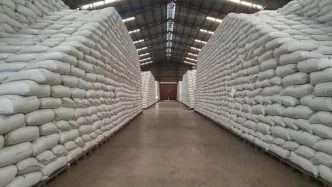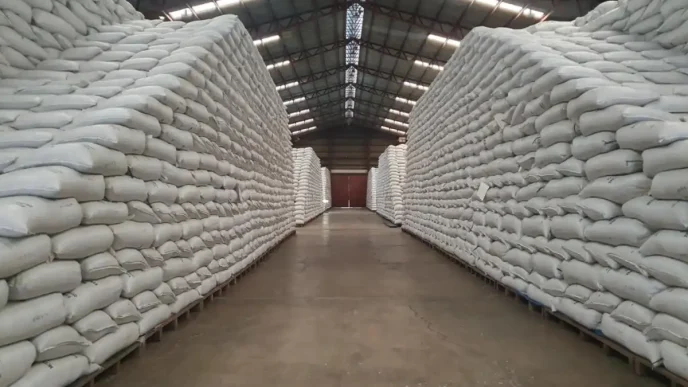Malaysia is navigating a complex economic landscape as US tariffs on its goods create both challenges and opportunities for key industries. Despite the volatility of international trade and the looming threat of higher tariffs, domestically driven sectors such as banking, construction, and utilities are expected to sustain their earnings, buoyed by internal demand. Meanwhile, the technology and manufacturing sectors, particularly semiconductors and rubber gloves, face a mixed outlook as they adapt to new trade realities.
Domestic Sectors as Economic Anchors
In the face of external pressures, Malaysia’s domestically focused industries are emerging as critical buffers. According to Danny Wong, chief executive officer of Areca Capital Sdn Bhd, sectors less reliant on international markets—including banks, data center-related companies, construction, utilities, and land sales—are likely to outperform those vulnerable to trade disruptions. “These sectors could likely outperform the ones that are affected by external factors like tariffs” Wong told a local business outlet on August 6, 2025. He added that the impact of tariffs may diminish over time as they are finalized or become less of a focal point in market discussions.
Analysts echo this optimism for domestic sectors. Maybank Investment Bank (Maybank IB) Research anticipates a more balanced second quarter of 2025 following a lackluster start to the year, highlighting positive momentum in construction, healthcare, property, and select areas of oil and gas and utilities. This resilience underscores Malaysia’s ability to lean on internal demand as a stabilizing force amid global uncertainties.
Navigating the US Tariff Landscape
The trade relationship between Malaysia and the United States has been under strain since early April 2025, when the Trump administration imposed an initial 24% tariff on Malaysian goods. Threats of an increase to 25% or even 40% loomed large, creating uncertainty for exporters. However, after intensive negotiations, a trade pact was secured, reducing the effective tariff rate to 19% as of August 2025. Notably, exemptions remain in place for semiconductors under Section 232 and pharmaceuticals, reflecting Malaysia’s strategic importance in the global supply chain.
Malaysia accounts for approximately 19.8% of total US semiconductor imports, just ahead of Chinese Taipei at 19% and Vietnam at 10%. Electrical and electronics exports to the US constitute 70% of Malaysia’s total exports to the country, according to a recent report by Hong Leong Investment Bank Research (HLIB Research). The report also emphasized that the US cannot afford to alienate Malaysia given its pivotal role in technology supply chains, a factor that likely influenced the tariff exemptions and the negotiated reduction.
Despite these exemptions, the broader impact of tariffs varies across industries. Wong noted that technology companies, particularly those in sub-sectors like chip manufacturing, artificial intelligence, and automotive, may be able to adapt swiftly to tariff changes. However, firms reliant on labor-intensive processes could face significant hurdles in remaining competitive.
Rubber Gloves: A Sector Under Pressure
The rubber glove industry, in which Malaysia holds the largest global market share as of 2024, illustrates the complexities of the current trade environment. CIMB Securities anticipates a modest shift in US glove orders to Malaysia due to the revised tariff structure. However, the higher tariffs are expected to increase costs for US buyers, potentially limiting restocking efforts or leading to leaner inventories. Additionally, competitors such as China and Vietnam are likely to redirect supply to non-US markets at more competitive prices, intensifying global pricing pressures.
CIMB Securities also predicts that Chinese glove makers may relocate production to ASEAN countries like Indonesia to benefit from lower US tariffs, a move that could further crowd the regional market. The research house maintains a neutral stance on the sector, citing ongoing challenges such as sluggish demand recovery, elevated costs, and weak average selling prices in an oversupplied market with new capacity coming online, particularly from Indonesia.
Maybank IB shares a more pessimistic outlook, maintaining a negative stance on local glove makers. Despite Malaysia’s reduced tariff rate of 19%, the narrow or nonexistent tariff differential compared to regional peers such as Indonesia, Thailand, and Vietnam offers little competitive edge. Chinese manufacturers are expanding capacity in these countries, establishing offshore facilities that bypass US tariffs on China-origin goods. This intensifies competition within Southeast Asia and limits pricing power for Malaysian firms.
Cost disparities add to the challenge. Maybank IB’s channel checks indicate that Chinese production costs overseas range from US$14 to US$15 per 1,000 pieces, compared to Malaysia’s US$15 to US$16 per 1,000 pieces. With similar tariff rates and higher operational costs, local glove makers risk losing US market share as new capacity in neighboring countries comes online between late 2025 and early 2026. Maybank IB also warns of potential weak upcoming results, driven by a weakening US dollar against the Malaysian ringgit, and stresses that cost efficiency will be critical for maintaining competitiveness.
Broad Economic Strengths and Strategic Positioning
Despite sectoral challenges, Malaysia’s overall economic outlook is not without bright spots. HLIB Research points to several factors supporting national competitiveness, including resilient export growth, market diversification, and a recovering tourism sector. The country’s extensive network of bilateral free trade agreements and participation in the Regional Comprehensive Economic Partnership (RCEP) provide opportunities for preferential market access, positioning Malaysia as a regional trade hub. Ongoing trade talks further enhance this strategic advantage, offering a buffer against external headwinds.
However, not all sectors are poised for growth. Planters, for instance, may face weaker earnings in the second quarter of 2025 due to lower crude palm oil prices, though some industries could see gains from currency exchange fluctuations and disposal activities, according to Maybank IB Research. The interplay of these factors highlights the uneven impact of global trade dynamics on Malaysia’s economy, with domestically driven sectors and strategic exemptions providing critical support.
Looking Ahead: Balancing Opportunities and Risks
As Malaysia grapples with the implications of US tariffs, the resilience of its domestic sectors offers a foundation for stability. The technology industry, bolstered by exemptions for semiconductors, remains a cornerstone of Malaysia’s export economy, while the rubber glove sector faces mounting competition and cost pressures. Strategic trade agreements and market diversification efforts signal a proactive approach to mitigating external risks, yet the path forward remains uncertain for industries exposed to global pricing wars and capacity expansions in neighboring countries.
The coming months will test Malaysia’s ability to adapt to evolving trade policies while capitalizing on its strengths in the global supply chain. For now, the focus remains on fostering cost efficiency and leveraging domestic demand to weather the storm of international trade volatility. As tariff impacts unfold, the nation’s economic trajectory will depend on its capacity to balance sectoral challenges with broader strategic gains.
















